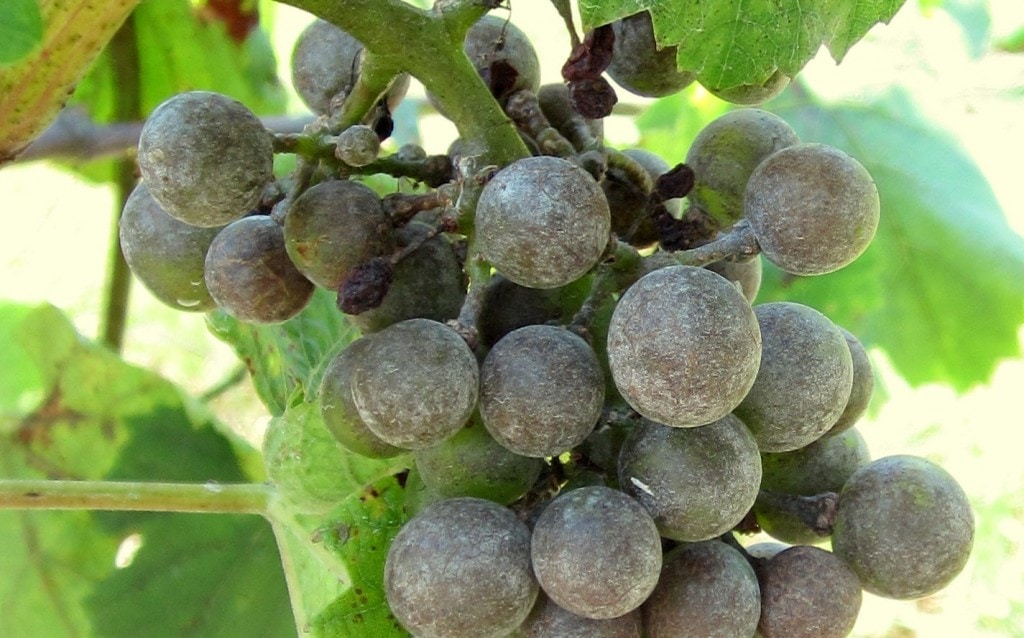Biofungicide options to control powdery mildew (PM) and Botrytis cinerea on grape
Wurms K, Agnew R, Neal S, Ah Chee A, Walter M, Vorster L
The New Zealand Institute for Plant and Food Research Limited
Powdery mildew (PM) control has emerged as one of the most challenging pathology problems of grapes in recent years. Problems with existing control methods include resistance to demethylation inhibitor (DMI) and quinone outside inhibitor (QOI) fungicides, and heavy inoculum loads necessitating sulphur sprays at 7- to 10-day intervals. These issues are driving the need to provide new methods of PM control, preferably that are benign to the environment and human health.
New Zealand Winegrowers and Plant & Food Research (PFR) have developed two biofungicides based on the natural products soybean oil and anhydrous milk fat (AMF), which provide control of PM on a number of crops, as well as botrytis bunch rot control rivalling that of commercial fungicides. MIDI-Zen® (MZ) is a soybean-based fungicide and has been commercialised by BotryZen (2010) Ltd. AMF has not been commercialised, despite its efficacy against PM in other crops. Both MZ and AMF require further PM and botrytis bunch rot efficacy data on grapes, particularly in the South Island on denser Sauvignon blanc grape canopies.
The New Zealand Winegrowers Research Centre is funding a research trial on Marlborough Sauvignon blanc in 2018-19 in the mid-season between flowering and véraison. Fortnightly applications of MIDI-Zen and AMF are being evaluated for their control of PM and botrytis bunch rot on standard and low -density canopies, in comparison with a standard sulphur spray programme.
Scanning electron microscopy studies indicate that AMF and MZ appear to have different modes of action, and the introduction of new chemistries with different modes of action, in combination with existing control methods, has the potential to increase efficacy and durability of PM control on grapes. If successful, these two biofungicides could lead to new tools for New Zealand growers to use against PM, and might become an integral part of an improved and more sustainable PM disease control programme.
This article first appeared in the April/May 2019 issue of New Zealand Winegrowers magazine

















